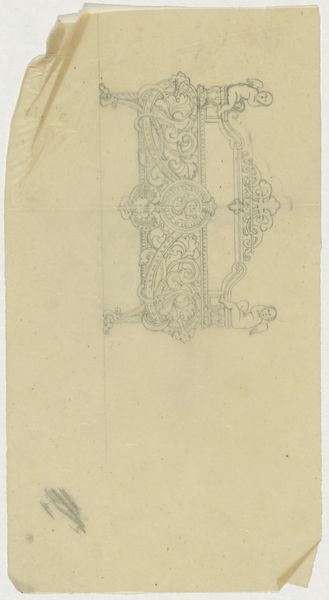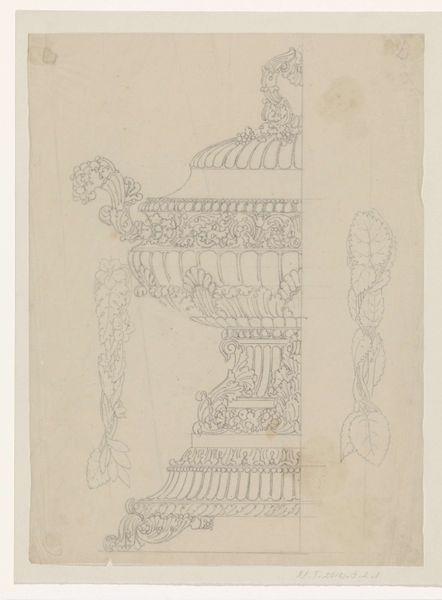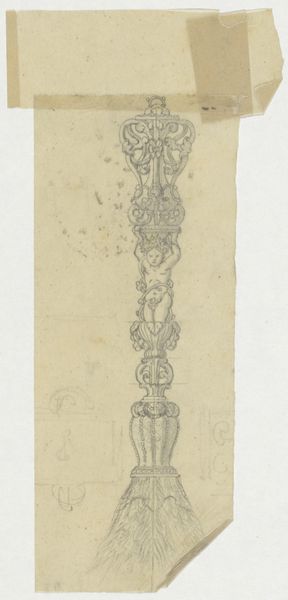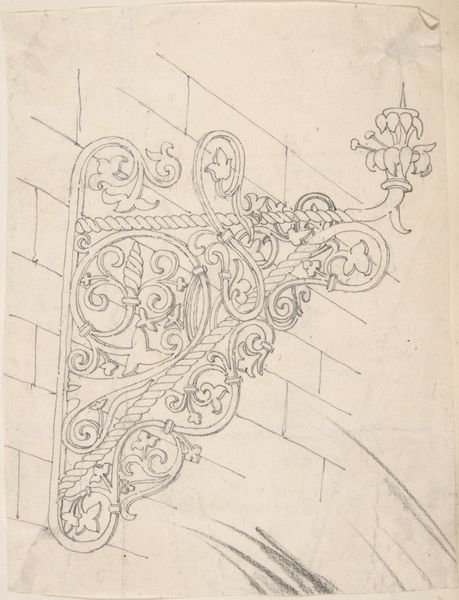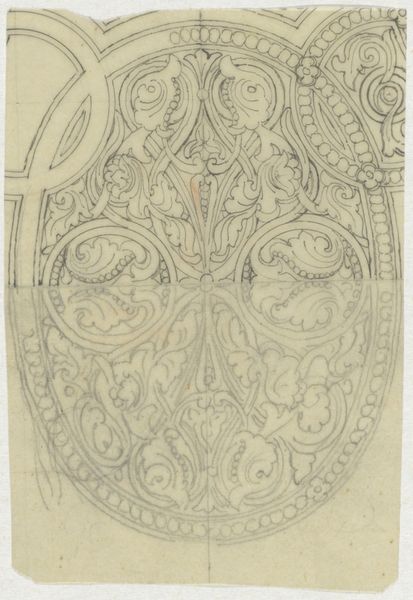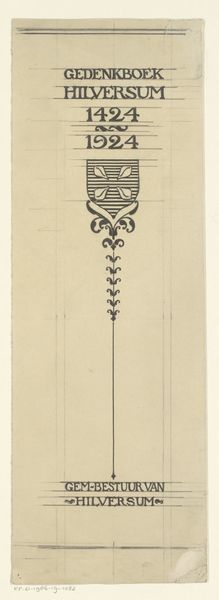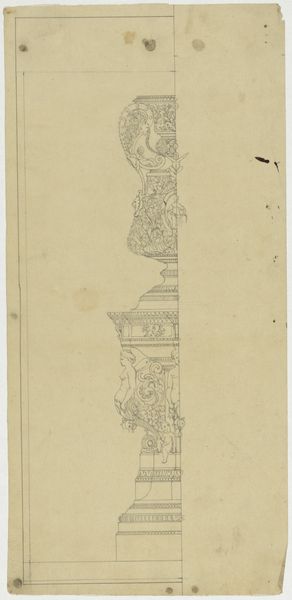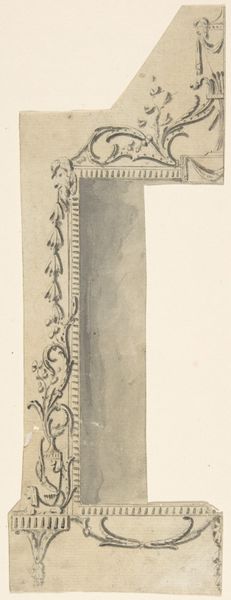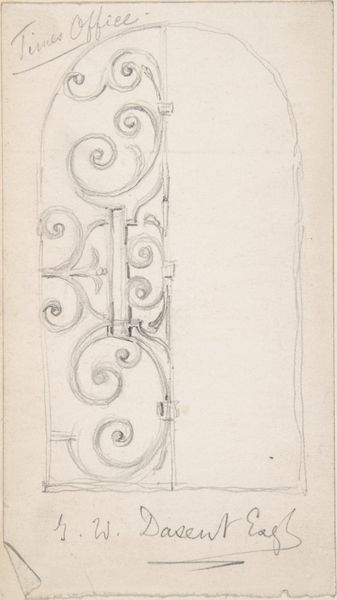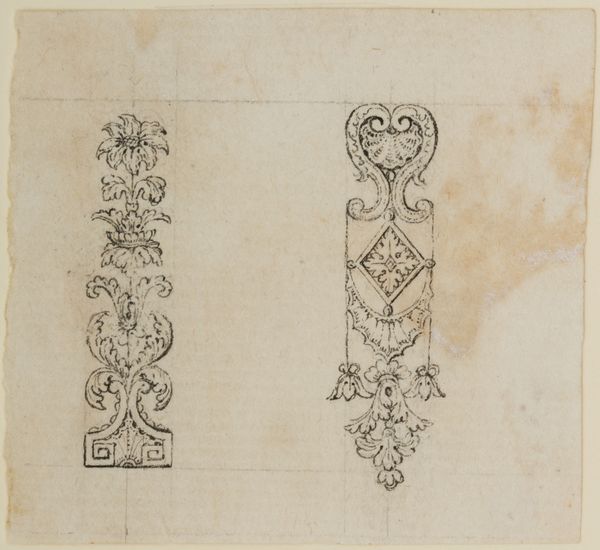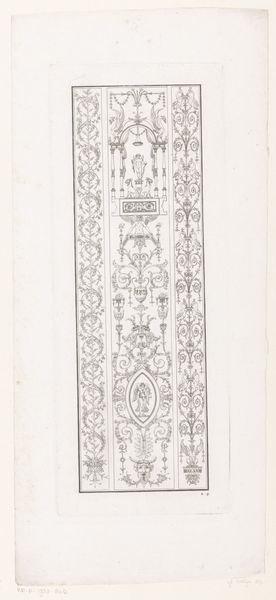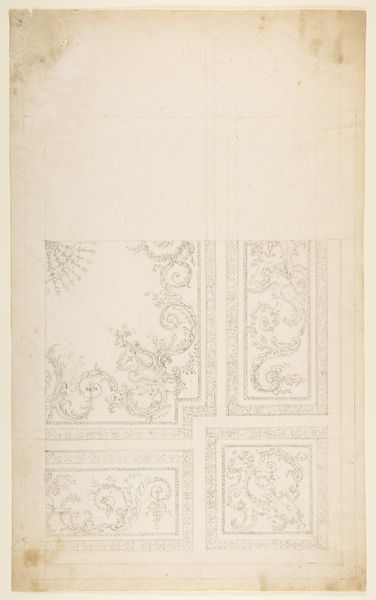
Kader met bloemornamenten en het wapen van Hilversum 1884 - 1952
0:00
0:00
drawing, pencil
#
drawing
#
pen sketch
#
geometric
#
pencil
#
line
Dimensions: height 462 mm, width 276 mm
Copyright: Rijks Museum: Open Domain
Editor: This is "Kader met bloemornamenten en het wapen van Hilversum," which translates to "Frame with floral ornaments and the coat of arms of Hilversum," by Reinier Willem Petrus de Vries. It’s dated between 1884 and 1952 and made with pencil and drawing. It almost looks like a blueprint of some sort. What stands out to you about its composition? Curator: The power of this work lies in its very structure. Observe the meticulous arrangement of lines, how they converge and diverge to create both geometric rigidity and organic fluidity. Notice the interplay between the defined, darker lines that form the right border and the faint suggestions of floral motifs on the left. The use of geometric construction lines adds a sense of underlying order, even architectural. Do you perceive a dialogue between precision and freedom? Editor: I see what you mean. It's not just a drawing; it's a system of lines building toward a defined form. So, the appeal isn't in what it depicts, but in how those shapes are constructed. But how do we move past just shapes? How do you analyze this particular… formalism? Curator: It’s important to study how this creates a visual rhythm. Track the darker contours against the lighter sketched in ornament on the left. Focus on these elements. De Vries’ control over line and his manipulation of visual space create meaning. We see the visual tension of geometry against these almost baroque tendrils of floral suggestion and a strong dynamic tension results. Editor: Ah, so by observing how these components interact on a purely visual level, we can begin to understand the piece, regardless of the subject matter depicted? Curator: Precisely. It is about distilling the artwork to its most essential formal components: line, form, texture, composition, and their relationships. From there, interpretations and meanings can emerge through rigorous observation. Editor: That’s helpful. I'll definitely look at artwork differently from now on, paying closer attention to how forms interact instead of immediately jumping to subject matter. Curator: I'm glad this process of structural looking was enlightening. The essence of art is often found in its construction, as we saw.
Comments
No comments
Be the first to comment and join the conversation on the ultimate creative platform.
